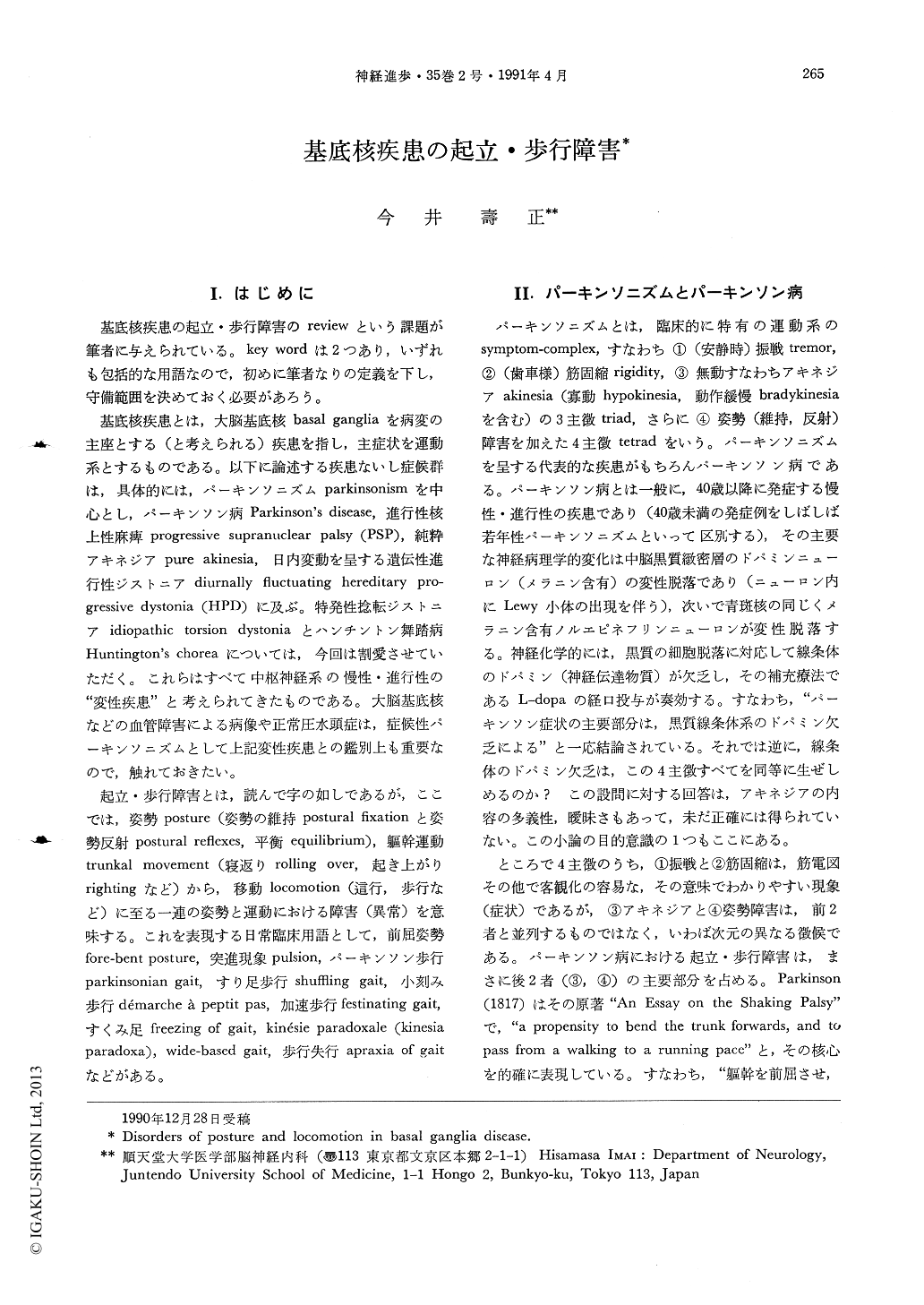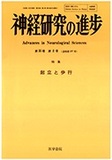Japanese
English
- 有料閲覧
- Abstract 文献概要
- 1ページ目 Look Inside
- サイト内被引用 Cited by
I.はじめに
基底核疾患の起立・歩行障害のreviewという課題が筆者に与えられている。key wordは2つあり,いずれも包括的な用語なので,初めに筆者なりの定義を下し,守備範囲を決めておく必要があろう。
基底核疾患とは,大脳基底核basal gangliaを病変の主座とする(と考えられる)疾患を指し,主症状を運動系とするものである。以下に論述する疾患ないし症候群は,具体的には,パーキンソニズムparkinsonismを中心とし,パーキンソン病Parkinson's disease,進行性核上性麻痺progressive supranuclear palsy(PSP),純粋アキネジアpure akinesia,日内変動を呈する遺伝性進行性ジストニアdiurnally fluctuating hereditary progressive dystonia(HPD)に及ぶ。特発性捻転ジストニアidiopathic torsion dystoniaとハンチントン舞踏病Huntington's choreaについては,今回は割愛させていただく。これらはすべて中枢神経系の慢性・進行性の“変性疾患”と考えられてきたものである。大脳基底核などの血管障害による病像や正常圧水頭症は,症候性パーキンソニズムとして上記変性疾患との鑑別上も重要なので,触れておきたい。
The clinical pathophysiology of disorders of posture, trunkal movement and locomotion caused by or closely related to basal ganglia dysfunction are reviewed. Parkinsonism and related disorders are mainly described here as the representative of basal ganglia diseases, including Parkinson's disease, progressive supranuclear palsy (PSP), dopa-unresponsive pure akinesia, juvenile parkinsonism and diurnally fluctuating hereditary progressive dystonia (HPD). All these diseases or syndromes are considered to be idiopathic or degenerative. Symptomatic parkinsonism due to basal ganglia vascular disease, subcortical arteriosclerotic encephalopathy (Binswanger's disease) and normal pressure hydrocephalus are also discussed.

Copyright © 1991, Igaku-Shoin Ltd. All rights reserved.


